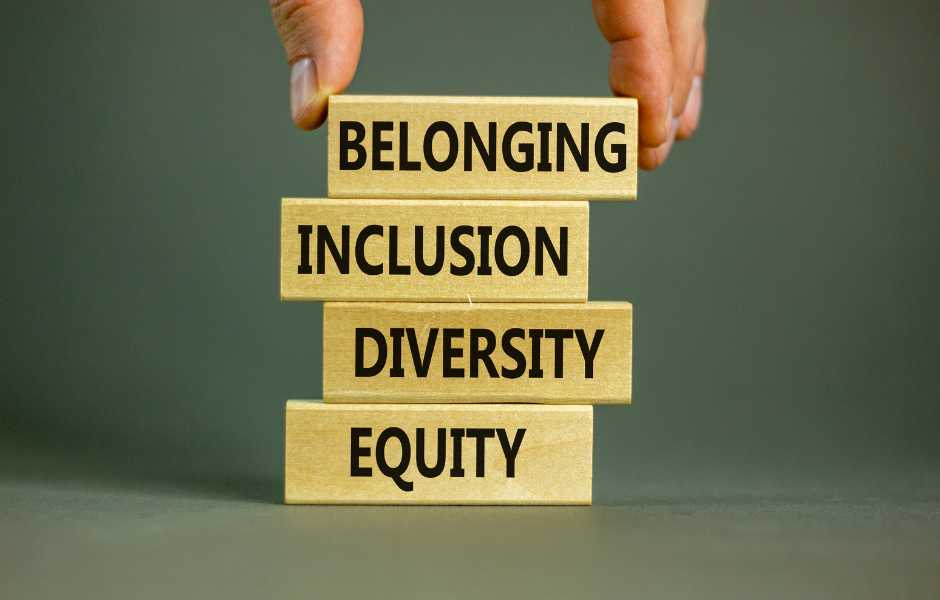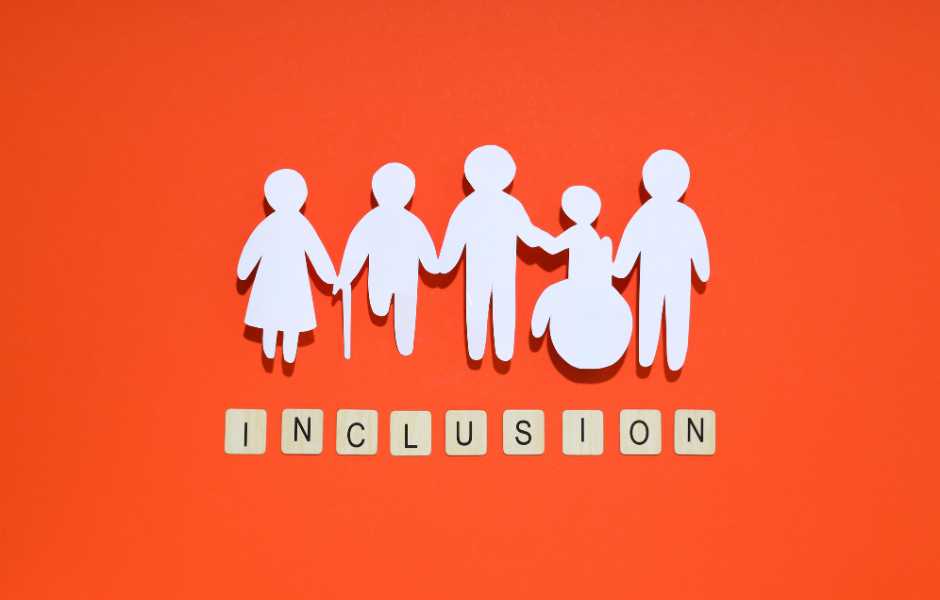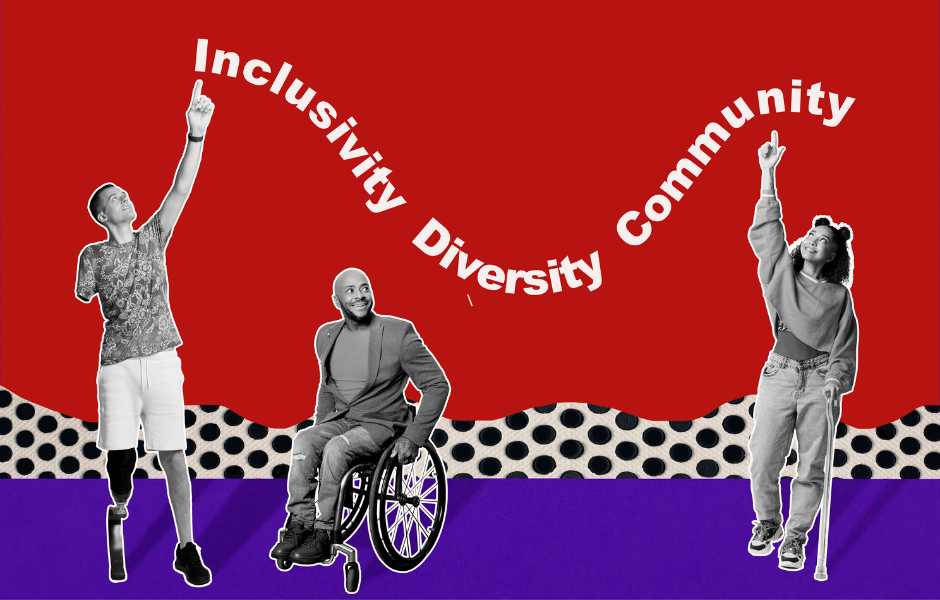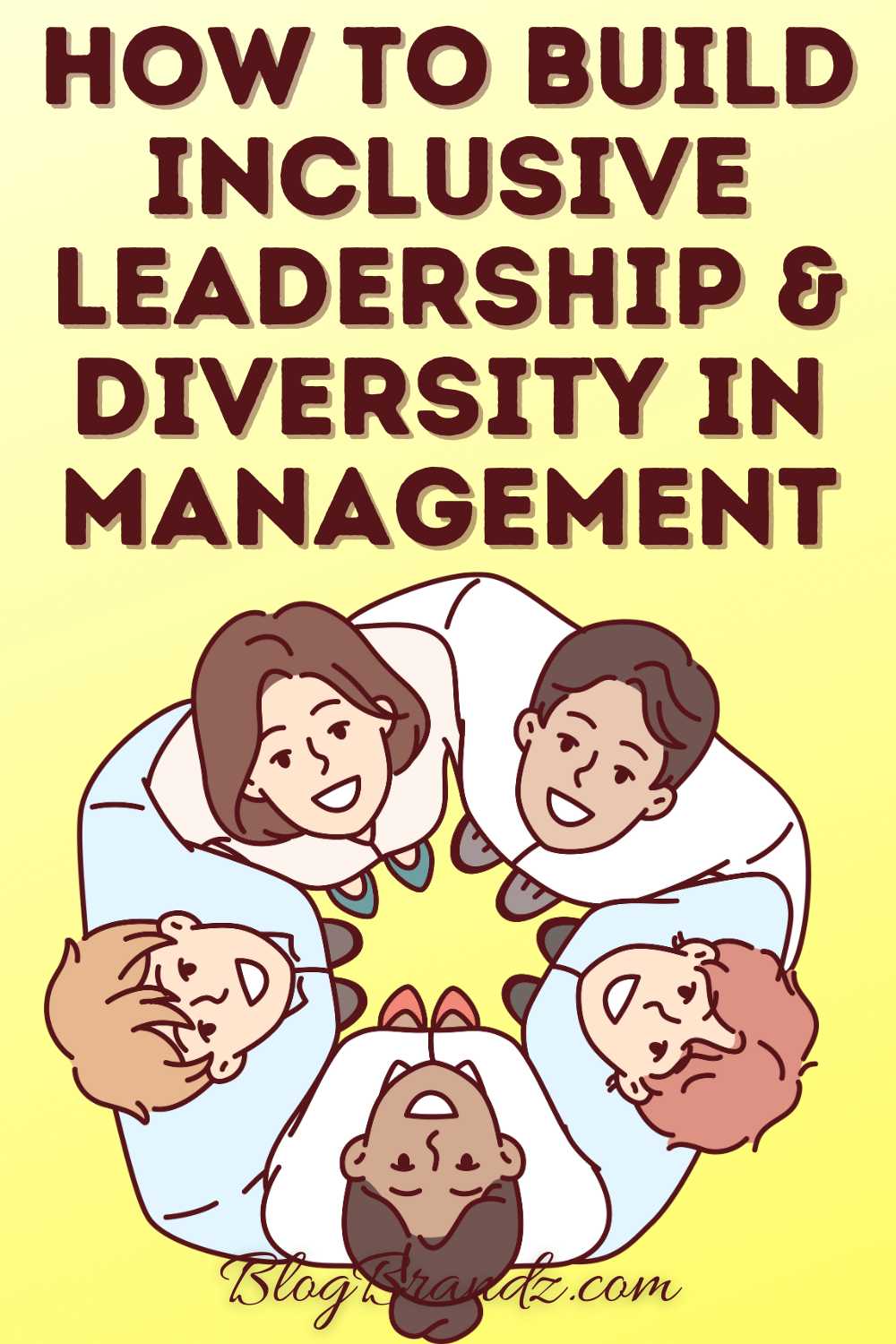
Learn how to build inclusive leadership, boost team morale, and enrich your company culture to ensure long-term business success.
The diversity of ideas and skills brought by personnel from different walks of life is a major factor in a company’s success. Leadership that encourages inclusion creates a workplace that respects and values the contributions of all employees.
The outcomes of inclusive leadership and diversity in management include a rise in profitability as a result of greater output, contentment among clients, and competitiveness in the marketplace thanks to this policy of openness.
Employee engagement, retention, and quality of hires are all improved by creating a fair and inclusive work environment where everyone’s ideas are heard and respected.
As Commander in Chief from 1993 to 2001, Bill Clinton was a natural leader, and his ability to communicate with others is still widely admired. He spent a lifetime navigating complex challenges and bridging deep divides.
In his MasterClass on Inclusive Leadership, the 42nd President of the United States teaches you how to be an effective, empathetic leader; how to inspire diverse teams, manage criticism, and mediate conflict using examples from his political career.
Click here to join Bill Clinton’s Inclusive Leadership MasterClass
Contents
The history of DEI initiatives
While there was no single, specific event that caused companies to start implementing inclusion and diversity initiatives, many DEI leadership experts cite the murder of George Floyd as the turning point in the push for diversity and inclusion in the workplace along with a combination of factors, including:
#1. Legal Changes
Legislation such as the U.S. Civil Rights Act of 1964 and subsequent anti-discrimination laws mandated equal opportunities and protections for employees, encouraging organizations to address diversity and inclusion.
#2. Changing Societal Norms
As society became more diverse and inclusive, there was a growing recognition of the importance of reflecting these values in the workplace.
#3. Globalization
Increasingly globalized markets led companies to understand the benefits of diverse perspectives in serving diverse customer bases.
#4. Business Case
Research started showing that diverse teams and leadership can lead to better decision-making, innovation, and financial performance, prompting businesses to take action.
#5. Employee Advocacy
Employees began advocating for diversity and inclusion, demanding workplaces that valued all voices and backgrounds.
#6. Media Attention
High-profile incidents of discrimination and lack of diversity in companies have drawn media attention, leading to public pressure for change.
#7. Competitive Advantage
Companies recognized that attracting and retaining top talent required creating inclusive cultures.
#8. Leadership Commitment
Many companies began to see diversity and inclusion as part of their core values and integral to their long-term success, with CEOs and senior leaders driving initiatives to create a diverse work environment.
While there isn’t a single event that triggered these changes, it’s been a collective response to societal, legal, and business pressures that have led to the widespread adoption of diversity and inclusion practices in the corporate world.
Definition of diversity and inclusion in the workplace
Diversity and inclusion in the workplace are related but distinct concepts that focus on creating a more equitable and harmonious work environment for all employees, regardless of their background, characteristics, or identities. Here are definitions for both terms:
Diversity in the workplace
Diversity refers to the presence of a wide range of human differences that encompass various dimensions, including but not limited to:
- Demographic characteristics such as race, ethnicity, gender, age, sexual orientation, disability status, and nationality.
- Cultural backgrounds include different national and regional cultures, languages, and religions.
- Educational and professional experiences such as varying levels of education, skills, and work backgrounds.
- Thought and perspective include diverse ways of thinking, problem-solving, and approaching tasks.
- Lifestyle and life experiences including socio-economic backgrounds and life stages.
In a diverse workplace, employees from various backgrounds come together, bringing a wealth of different perspectives, ideas, and talents. However, diversity alone does not guarantee an inclusive or equitable workplace.
Inclusion in the workplace
Inclusion goes beyond diversity and involves creating an environment where all employees feel valued, respected, and included. It is about actively fostering an atmosphere of belonging and equity where:
- Diverse perspectives are welcomed: Employees are encouraged to share their unique viewpoints, and their contributions are acknowledged and respected.
- Barriers are removed: Any systemic or cultural barriers that prevent certain groups from fully participating or advancing within the organization are identified and eliminated.
- Equitable opportunities: All employees have access to the same opportunities for growth, development, and advancement, regardless of their background or identity.
- Respect and fair treatment: Every employee is treated with fairness, dignity, and respect, and no one faces discrimination, harassment, or exclusion.
Inclusion ensures that diverse employees not only exist within the workplace but also thrive and contribute their best to the organization’s success.
Diversity represents the presence of differences among employees, while inclusion is the practice of creating an environment where those differences are acknowledged, respected, and leveraged to create a more equitable and innovative workplace. Both are essential components of building a healthy and effective workplace culture.
What are the benefits of an inclusive culture?
An inclusive culture, meaning a workplace culture in which all employees feel welcome, valued, and supported, regardless of their diversity characteristics, fosters a sense of belonging and acceptance among employees, and actively promotes and values diversity and inclusion.
Building an inclusive work environment can involve implementing policies and practices to support diversity and inclusion, providing training and development programs, and creating opportunities for career advancement and leadership development for diverse employees.
Creating an inclusive culture at work can also involve promoting open and respectful communication, actively listening to and valuing the perspectives and ideas of all employees, and creating a sense of community within the organization.
It’s a myth that diversity and inclusion are only good for your employees. Initiatives promoting diversity and inclusion can be very advantageous for employees as well as for the whole firm.
A diverse and welcoming workplace can promote greater innovation and creativity, as well as improved decision-making and problem-solving skills. It can also aid in fostering a supportive workplace environment and boosting employee morale.
Creating diversity and inclusion in the workplace can enhance an organization’s reputation in the community and help it better reflect and serve its clientele. It can also result in improved financial performance and competitiveness.
How can you promote diversity in management?
Inclusive leadership and diversity in management, meaning the presence of a wide range of diverse traits among an organization’s executives, can include diversity in terms of racial or ethnic origin, gender, sexual orientation, age, religion, and ability, as well as differences in background in terms of education and employment, life experiences, and worldviews.
For instance, cultural diversity in the workplace refers to the presence of a wide range of diverse characteristics among employees in terms of their cultural backgrounds, experiences, and perspectives.
Promoting cultural diversity at work may entail actively seeking out and employing members of underrepresented groups and giving them chances for leadership development and career progression. It can also entail fostering an inclusive and welcoming workplace environment for all staff members, regardless of their cultural heritage.
What is diversity management?
Diversity management, meaning the process of creating and implementing strategies and initiatives to support and promote a diverse and inclusive workplace, involves actively valuing and leveraging the differences among employees in terms of their characteristics, experiences, and perspectives.
The goal of managing diversity and equality in the workplace is to create a workplace culture that is inclusive and welcoming to all employees and to ensure that all employees feel valued, respected, and supported.
Promoting inclusive cultures can involve a range of activities, such as training and development programs, policies and practices to support diversity and inclusion, and inclusive talent management initiatives to hire and promote diverse employees.
Diversity management can bring a range of benefits to an organization, including increased creativity and innovation, improved decision-making, and enhanced problem-solving. It can also help to create a positive work culture improve employee morale, and can improve the organization’s reputation in the community.
How to create inclusive cultures at work
Creating inclusive cultures can bring a range of benefits to an organization, including increased creativity and innovation, improved decision-making, and enhanced problem-solving.
Building an inclusive culture can also help to create a positive work culture improve employee morale, and can improve the organization’s reputation in the community. Here are some characteristics of an inclusive culture to keep in mind:
- Diverse Hiring Practices: Actively seeking candidates from various backgrounds and providing equal opportunities for all during the hiring process.
- Employee Resource Groups: Establishing and supporting affinity groups that allow employees to connect based on shared characteristics or experiences.
- Training and Development: Offering diversity and inclusion training programs to educate employees on bias, stereotypes, and the importance of inclusivity.
- Flexible Work Arrangements: Providing options such as remote work or flexible hours to accommodate employees’ diverse needs.
- Open Communication: Encouraging open dialogue where employees feel safe to share their ideas, concerns, and experiences.
- Mentorship and Sponsorship Programs: Pairing employees with mentors or sponsors who can help them advance in their careers, regardless of their background.
- Equitable Benefits: Ensuring that benefits packages, like healthcare and parental leave, are inclusive and meet the diverse needs of all employees.
- Inclusive Leadership: Cultivating a leadership team that actively champions diversity and sets an example of inclusive behavior.
- Feedback Mechanisms: Establishing channels for employees to report discrimination or bias and ensuring prompt and fair responses.
- Celebrating Differences: Recognizing and celebrating cultural, religious, and other diverse holidays and traditions within the workplace.
- Accessibility: Making physical spaces and digital resources accessible to all, including individuals with disabilities.
- Equal Pay: Conduct regular pay equity audits to eliminate wage gaps based on gender, race, or other characteristics.
- Promotion Based on Merit: Ensuring that promotions and career advancement are based on skills and performance rather than biases.
- Supplier Diversity: Partnering with a diverse range of suppliers and vendors to promote economic inclusivity.
- Community Engagement: Involvement in local communities and social responsibility initiatives that support underrepresented groups.
These inclusive culture examples demonstrate the multifaceted approach organizations can take to create and sustain an inclusive culture that benefits employees and the business as a whole.
Why is diversity in leadership important?
Leadership diversity in the workplace is crucial because a diverse leadership team can bring a variety of viewpoints, experiences, and ideas to the table, which can improve decision-making, problem-solving, and creativity.
A diverse leadership team can enhance employee morale, foster a healthy work environment, and enhance the organization’s standing in the community. It can also improve how well a company represents and serves its clientele, boost its competitiveness, and improve financial performance.
Promoting diversity in leadership and celebrating diversity in the workplace can also address issues of cultural inclusion, representation, and equity, and make the workplace more hospitable and inclusive for all workers.
What is inclusive leadership?
Inclusive leadership, meaning the leadership philosophies and practices that actively advance belonging, diversity, and inclusion at work. A leader who is inclusive values and respects employee differences and cultivates a workplace where everyone feels supported, appreciated, and at home.
Inclusive leadership that values all voices and supports diversity, inclusion, and belonging in the workplace is essential because it improves problem-solving and cuts down on bias.
Being an inclusive leader can entail actively seeking and employing diverse candidates, providing diverse employees with chances for leadership development and career progression, and fostering an inclusive and welcoming workplace atmosphere.
Offering training and development opportunities, putting policies and practices in place to support diversity and inclusion, and actively hearing and appreciating the thoughts and ideas of every employee, are just a few examples of the many things inclusive leadership may entail.
An organization can gain from inclusive leadership in a variety of ways, such as increased creativity and innovation, better decision-making, and improved problem-solving. Inclusive leaders enhance employee morale, foster a healthy work environment, and enhance the organization’s standing in the community.
What are the 5 disciplines of inclusive leaders?
Inclusive leaders encourage empathy and compassion, celebrate differences, and advocate for equal treatment to create a community where everyone feels like they belong. The 5 disciplines of inclusive leaders are:
#1. Self-awareness
Inclusive leaders are aware of their own biases, values, and beliefs and how these can impact others. They are open to learning and self-reflection to increase their understanding of diversity and inclusion.
#2. Empathy & Compassion
Inclusive leaders can understand and share the feelings of others. They can put themselves in someone else’s shoes and consider different perspectives.
#3. Intercultural competency
Inclusive leaders have the knowledge and skills to effectively communicate, collaborate, and lead in diverse environments. They understand and value different cultures and can adapt their communication style to meet the needs of others.
#4. Courage
Inclusive leaders are willing to take risks and speak up for what is right, even when it is difficult or unpopular. They are not afraid to challenge the status quo and stand up for the rights and dignity of all people.
#5. Flexibility
Inclusive leaders are adaptable and open to change. They can respond to the needs and perspectives of diverse individuals and teams and are willing to adjust their leadership style as needed.
DEI & inclusive leadership training courses
Learn inclusive management and inclusive leadership skills online to become a more inclusive leader with these leadership training courses.
Learn how to build, inspire, and empower diverse teams, mediate conflict, manage criticism, and create a personal framework to guide you and your team toward a shared vision with former President Bill Clinton.
Learn the inclusive leadership model to lead with diversity and inclusion, build strong teams, and address unconscious bias with emotional intelligence.
Learn to create a diverse and inclusive culture and leverage a diversity of skills, experience, and perspectives to drive success for you and your organization.
Be a leader who supports colleagues from underrepresented groups by creating an inclusive company culture to foster psychological safety and a sense of belonging.
A comprehensive guide to sourcing a diverse talent pool and designing an equitable and inclusive hiring process.
Learn the ins and outs of Diversity, Equity, and Inclusion. Understand, describe, and mitigate unconscious bias, recognize microaggressions and how to handle them, and become an ally in the workplace.
Learn practical strategies for building an organizational culture of diversity, equity, inclusion, and belonging.
If you’re a leader or project manager leading a dispersed global team, you’ll learn techniques to become an effective global leader and build a high-performance team.
In this MasterClass on Empathy, you’ll learn how to exercise, cultivate, and promote empathy to connect with others on a deeper, more human level.
Learn business & leadership skills
- Best Business Courses To Learn Entrepreneur Skills
- What Are The Key Leadership Skills To Develop In Future Leaders?
- Best Richard Branson Quotes & Business Lessons for Entrepreneurs
- 10 Inspiring Leadership Tips From Bob Iger, Disney CEO
- Inspirational Indra Nooyi Quotes On Leadership by the Former Pepsico CEO
- 10 Leadership Tips Inspired By Abraham Hicks Motivational Quotes
- How to Build Good Relationships as a Success-Driven Entrepreneur
- The Remote Workplace Guide To Managing Remote Teams
- How To Learn Powerful Negotiation Skills In The Workplace
- How to Create Happy Employees & Boost Employee Motivation
- How To Incentivise Productivity In The Workplace
- How to Improve Your Active Listening Skills as a Coach & Trainer
- How To Overcome Speech Anxiety & Learn The Art Of Public Speaking
- E-Training Tips To Create An Engaging Virtual Learning Environment
© 2023, Priya Florence Shah. All rights reserved.
Priya Florence Shah is a bestselling author and an award-winning blogger. Check out her book on emotional self-care for women. Priya writes short stories and poetry and chills with her two-legged and four-legged kids in her spare time.
Discover more from Business & Branding Tips
Subscribe to get the latest posts sent to your email.













